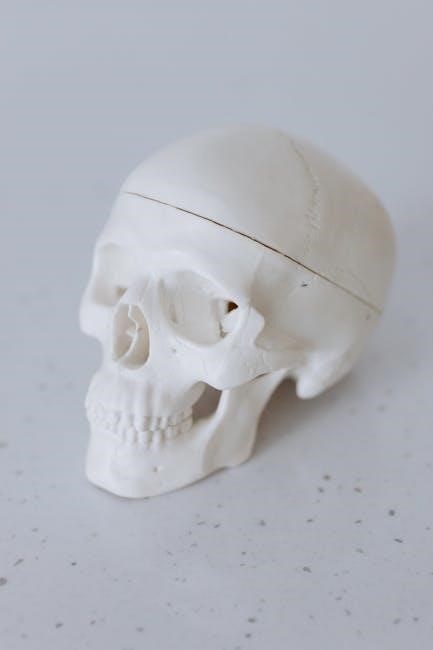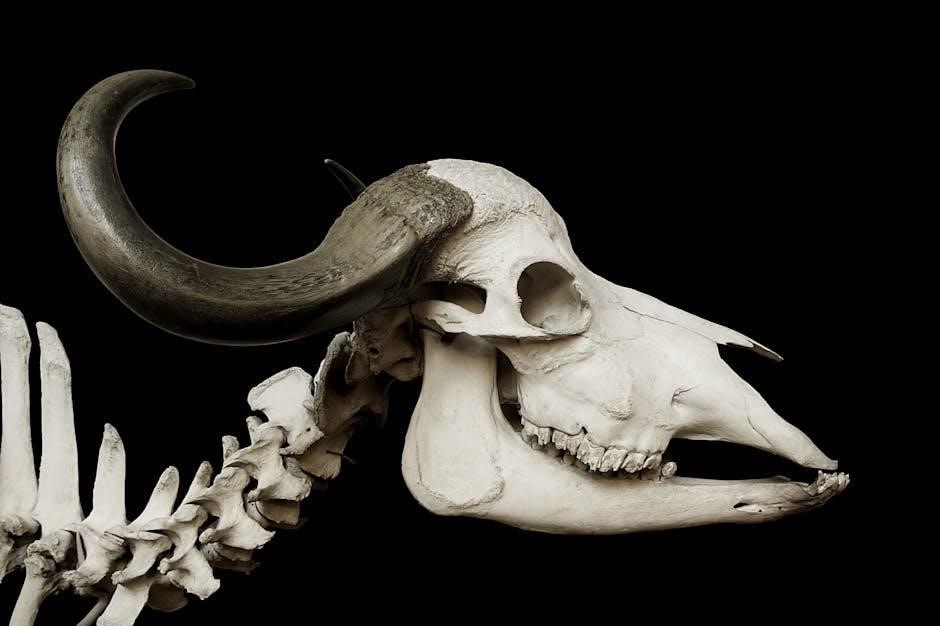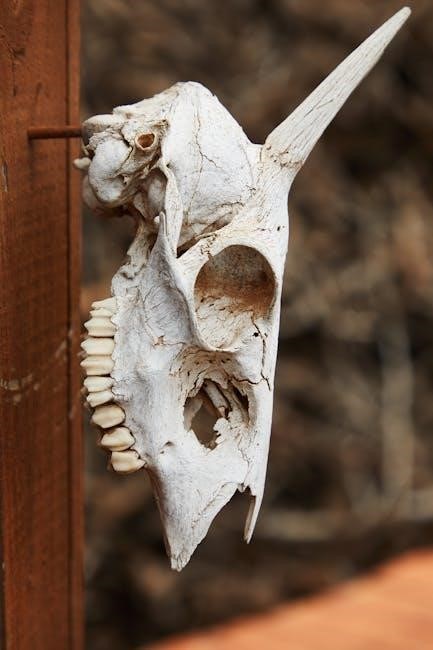Bone fractures represent disruptions in the continuity of a bone, ranging from minor cracks to complete breaks. Understanding the different types of fractures is crucial for appropriate diagnosis and treatment. Fractures are classified based on various factors, including the extent of the break, the bone involved, and the mechanism of injury.

Definition of a Fracture
A fracture, fundamentally, is defined as any disruption, break, or crack within a bone. This disruption can range in severity from a hairline crack, barely visible to the naked eye, to a complete separation of the bone into two or more distinct fragments. It’s important to distinguish between a fracture and a break, as the term “broken bone” is a colloquialism. In medical terminology, “fracture” is the formal and preferred term to describe any breach in the structural integrity of a bone.
Fractures can arise from a multitude of causes, primarily traumatic injuries such as falls, direct blows, or high-impact collisions. In these cases, the force applied to the bone exceeds its capacity to withstand the stress, leading to a fracture. However, fractures can also occur due to underlying medical conditions that weaken the bone, such as osteoporosis, infections, or tumors. These are known as pathological fractures and are often the result of minimal trauma. Furthermore, repetitive stress or overuse can lead to stress fractures, which are small cracks that develop gradually over time, commonly seen in athletes.
Fracture Classification Overview
Fractures are systematically classified based on several key characteristics, providing a framework for diagnosis, treatment planning, and communication among healthcare professionals. One primary classification is based on the extent of the break: complete fractures involve a full separation of the bone, while incomplete fractures only partially disrupt the bone’s structure. Another important distinction lies between open (compound) and closed fractures. Open fractures involve a break in the skin, exposing the bone to the external environment, increasing the risk of infection. Closed fractures, conversely, do not involve any skin penetration.
Furthermore, fractures are classified based on the alignment of the bone fragments. Displaced fractures occur when the bone fragments are not properly aligned, whereas stable fractures maintain proper alignment. The fracture pattern itself also contributes to classification, with terms like transverse, oblique, spiral, and comminuted describing the direction and nature of the fracture line or fragments. Finally, specific classification systems, such as the Neer system for proximal humerus fractures and the Bado classification for proximal ulna fractures, provide detailed categorization for fractures in particular anatomical locations, aiding in treatment decisions.

Types of Bone Fractures
Bone fractures are diverse, each with unique characteristics. They are classified based on the break’s nature, location, and stability. Understanding these different fracture types is essential for accurate diagnosis and effective treatment planning in orthopedic medicine.
Complete Fracture
A complete fracture signifies that the bone has been broken entirely into two or more separate pieces. This type of fracture involves a full discontinuity across the bone’s structure, distinguishing it from incomplete fractures where the bone remains partially intact. The severity and management of complete fractures depend on factors such as the location of the fracture, the degree of displacement, and any associated soft tissue injuries.
Complete fractures often result from significant trauma, such as falls, motor vehicle accidents, or direct blows to the bone. These fractures can be further categorized based on the pattern of the break, including transverse, oblique, spiral, and comminuted fractures. Diagnosis typically involves radiographic imaging, such as X-rays, to visualize the fracture and assess its characteristics.
Treatment for complete fractures aims to restore the bone’s alignment and stability, allowing for proper healing. This may involve closed reduction, where the bone fragments are manipulated back into their correct position without surgery, or open reduction, which requires surgical intervention to align the bone fragments and secure them with internal fixation devices like plates, screws, or rods. The choice of treatment depends on the fracture’s specific characteristics and the patient’s overall health.

Incomplete Fracture
An incomplete fracture, in contrast to a complete fracture, occurs when the bone cracks but does not break entirely into separate pieces. This means that a portion of the bone’s structure remains intact, providing some degree of stability. Incomplete fractures are more commonly seen in children, whose bones are more flexible and resilient than those of adults. However, they can also occur in adults, particularly in bones weakened by conditions like osteoporosis.
Common types of incomplete fractures include greenstick fractures, where the bone bends and cracks on one side but not all the way through, and buckle or torus fractures, where the bone’s cortex buckles or compresses due to axial loading. These fractures often result from lower-energy trauma compared to complete fractures.
Diagnosis of incomplete fractures can sometimes be challenging, as the fracture line may be subtle and difficult to visualize on X-rays. In some cases, additional imaging modalities like CT scans or MRI may be necessary to confirm the diagnosis. Treatment typically involves immobilization with a cast or splint to provide support and allow the bone to heal. The healing process is usually faster for incomplete fractures compared to complete fractures, as the bone maintains some structural integrity.
Open Fracture (Compound Fracture)
An open fracture, also known as a compound fracture, is a severe type of bone fracture where the broken bone fragments penetrate the skin, creating an open wound. This exposure of the bone to the external environment significantly increases the risk of infection, making open fractures more complicated to manage than closed fractures. The severity of an open fracture depends on the extent of the soft tissue damage, the degree of bone displacement, and the level of contamination.
Open fractures are typically caused by high-energy trauma, such as car accidents, falls from significant heights, or gunshot wounds. The immediate management of an open fracture involves controlling bleeding, covering the wound with a sterile dressing, and administering antibiotics to prevent infection. Surgical intervention is usually required to clean the wound thoroughly, remove any debris or contaminated tissue, and stabilize the fracture.
Bone stabilization can be achieved using various methods, including external fixation, where pins or screws are inserted through the skin into the bone and connected to an external frame, or internal fixation, where plates, screws, or rods are used to hold the bone fragments together. The healing process for open fractures is often longer and more challenging than for closed fractures, and patients may require multiple surgeries, prolonged antibiotic therapy, and physical therapy to regain full function.
Closed Fracture
A closed fracture, in contrast to an open fracture, is a bone break that does not involve any disruption of the skin. In other words, the broken bone fragments do not penetrate the skin, and there is no open wound associated with the injury. Closed fractures are generally less severe than open fractures due to the lower risk of infection and associated complications.
Closed fractures can result from a variety of causes, including falls, direct blows, or twisting injuries. The diagnosis of a closed fracture typically involves a physical examination, where the doctor assesses the area for pain, swelling, and deformity, followed by imaging studies, such as X-rays, to confirm the fracture and determine its type and location.
Treatment for closed fractures varies depending on the severity and location of the break. Many closed fractures can be effectively managed with immobilization using a cast, splint, or brace to hold the broken bone fragments in place while they heal. In some cases, if the bone fragments are significantly displaced, a closed reduction may be necessary, where the doctor manually manipulates the bone fragments back into their proper alignment without surgery. More complex closed fractures may require surgical intervention with internal fixation using plates, screws, or rods to stabilize the bone.
Stable Fracture
A stable fracture is defined as a break in a bone where the ends of the broken bone fragments are aligned and not significantly displaced. This means that the bones remain in their proper anatomical position or close to it. Due to the minimal displacement, stable fractures are less likely to cause further injury to surrounding tissues or require extensive intervention for healing.
Stable fractures often result from low-energy trauma, such as a simple fall or a minor twisting injury. While the bone is broken, the stability of the overall structure is maintained; Diagnosis is typically confirmed with X-rays, which show the fracture line and assess the degree of displacement. The key characteristic of a stable fracture is that the bone fragments are not significantly shifted out of alignment.
Treatment for stable fractures often involves immobilization to promote healing and prevent further displacement. This can be achieved using a cast, splint, or brace. The duration of immobilization depends on the bone involved and the specific type of fracture. Pain management is also an important aspect of treatment, and over-the-counter pain relievers may be sufficient. In most cases, stable fractures heal well with conservative management and do not require surgery.
Displaced Fracture
A displaced fracture occurs when the broken ends of the bone are not aligned properly. This means that the bone fragments have shifted out of their normal anatomical position, resulting in a visible deformity or misalignment. The displacement can be in any direction, including sideways, angled, or rotated. Displaced fractures are generally more severe than non-displaced fractures because they can cause more damage to surrounding tissues, such as muscles, nerves, and blood vessels.
Displaced fractures often result from high-energy trauma, such as car accidents, falls from significant heights, or direct blows to the bone. The force of the injury causes the bone to break and the fragments to shift out of place. Diagnosis is typically made through X-rays, which clearly show the misalignment of the bone fragments. In some cases, a CT scan may be necessary to assess the extent of the displacement and any associated injuries.
Treatment for displaced fractures typically involves reduction, which is the process of realigning the bone fragments into their correct position. This can be done manually, often under anesthesia, or surgically. Once the bone is realigned, it needs to be stabilized to prevent further displacement. This can be achieved using a cast, splint, or internal fixation devices, such as plates, screws, or rods. The goal of treatment is to restore the bone’s normal alignment and function, allowing for proper healing and recovery.
Transverse Fracture
A transverse fracture is a type of bone fracture characterized by a break that occurs straight across the bone shaft, perpendicular to its long axis. This type of fracture typically results from a direct, bending force applied to the bone. Imagine a bone being struck directly from the side; the resulting break that runs straight across is a transverse fracture. The clean, horizontal break distinguishes it from other fracture patterns like spiral or oblique fractures.
The mechanism of injury in a transverse fracture is often a significant, focused impact. This can occur in various scenarios, such as a direct blow during a contact sport, a fall where the bone impacts a hard surface at a right angle, or a vehicular accident. The severity of the fracture can vary depending on the force of the impact and the overall health of the bone. In some cases, the fracture may be stable, with the bone fragments remaining relatively aligned. In other cases, the fracture may be displaced, with the bone fragments shifting out of position.
Diagnosis of a transverse fracture is usually straightforward, relying on X-ray imaging to visualize the distinct fracture line. Treatment typically involves immobilization with a cast or splint to allow the bone ends to heal properly. In cases of significant displacement, surgery may be necessary to realign the bone fragments and stabilize them with internal fixation devices like plates or screws. The recovery period for a transverse fracture depends on factors such as the location and severity of the fracture, as well as the individual’s overall health and adherence to the treatment plan.
Spiral Fracture

A spiral fracture is a type of bone fracture that occurs when a twisting force is applied to a bone, causing it to break in a spiral pattern. This type of fracture is often seen in long bones, such as those in the arms and legs, and is characterized by a fracture line that encircles the bone in a corkscrew fashion. The twisting mechanism of injury differentiates spiral fractures from transverse or oblique fractures, which result from direct impact or angulation forces.
Spiral fractures are commonly associated with sports injuries, particularly those involving sudden changes in direction or rotational forces. They can also occur in accidents where a limb is twisted forcefully. In children, spiral fractures of the tibia (shinbone) are sometimes referred to as toddler’s fractures, as they can result from relatively minor twisting injuries sustained during normal play. However, in certain situations, a spiral fracture, especially in non-ambulatory children, warrants further investigation to rule out the possibility of non-accidental trauma.
Diagnosing a spiral fracture typically involves X-ray imaging, which reveals the characteristic spiral fracture line. Treatment depends on the severity and location of the fracture, as well as the patient’s age and overall health. In stable, non-displaced spiral fractures, immobilization with a cast or splint may be sufficient to allow the bone to heal properly. However, displaced spiral fractures often require surgical intervention to realign the bone fragments and stabilize them with screws, plates, or rods. Rehabilitation and physical therapy are important components of the recovery process to restore strength, range of motion, and function to the affected limb.
Greenstick Fracture
A greenstick fracture is a type of incomplete fracture that occurs primarily in children, whose bones are more flexible than those of adults. In a greenstick fracture, the bone bends and cracks, but it doesn’t break completely into separate pieces. The name “greenstick” comes from the analogy to a young, green twig that bends and splinters but doesn’t snap entirely when bent.
This type of fracture typically occurs due to the greater elasticity of children’s bones, which contain a higher proportion of collagen compared to adult bones. When a force is applied, the bone may bend beyond its limit, resulting in a fracture on one side while the other side remains intact. Greenstick fractures are most commonly seen in the forearm bones (radius and ulna) and the tibia (shinbone).
Symptoms of a greenstick fracture include pain, tenderness, swelling, and deformity at the fracture site. Diagnosis is usually made through X-ray imaging, which reveals the characteristic bending and cracking of the bone. Treatment typically involves immobilization with a cast or splint to stabilize the fracture and allow it to heal properly. In some cases, the bone may need to be gently straightened before casting to ensure proper alignment. Healing time for greenstick fractures is generally shorter than for complete fractures, but follow-up care is essential to monitor healing progress and ensure that the bone regains its full strength and function. Physical therapy may be recommended to restore range of motion and strength after the cast is removed.

Comminuted Fracture
A comminuted fracture is a type of bone fracture characterized by the bone breaking into three or more fragments. This type of fracture is typically caused by high-impact trauma, such as a car accident, a fall from a significant height, or a direct blow to the bone. The severity of the impact shatters the bone into multiple pieces, making it more complex to treat than other types of fractures.
Comminuted fractures can occur in any bone in the body, but they are more common in long bones such as the femur (thigh bone), tibia (shinbone), and humerus (upper arm bone). The symptoms of a comminuted fracture include severe pain, swelling, bruising, and deformity at the fracture site. The individual may also be unable to move or bear weight on the affected limb.
Diagnosis of a comminuted fracture is typically made through X-ray imaging, which reveals the multiple bone fragments. Treatment usually involves surgery to realign the bone fragments and stabilize them with plates, screws, rods, or wires. In some cases, bone grafting may be necessary to promote healing. Due to the complex nature of comminuted fractures, healing time can be longer than for other types of fractures, and there is a higher risk of complications such as infection, nonunion (failure of the bone to heal), and malunion (healing in a misaligned position). Physical therapy and rehabilitation are essential to restore strength, range of motion, and function after surgery.
Avulsion Fracture

An avulsion fracture occurs when a tendon or ligament pulls a small piece of bone away from the main bone structure. This type of fracture typically happens during sudden, forceful muscle contractions or when a joint is subjected to extreme stress. Instead of the tendon or ligament tearing, the force is strong enough to detach a fragment of bone at the point of attachment.
Avulsion fractures are common in athletes, particularly those involved in sports that require quick changes in direction or explosive movements such as sprinting, jumping, and kicking. Common sites for avulsion fractures include the hip, ankle, knee, and shoulder. Symptoms of an avulsion fracture include sudden, sharp pain at the injury site, swelling, bruising, and difficulty moving the affected area. The individual may also feel a gap or defect where the bone fragment has been pulled away.
Diagnosis of an avulsion fracture is typically made through X-ray imaging, which reveals the detached bone fragment. Treatment depends on the size and location of the fracture, as well as the individual’s activity level. Minor avulsion fractures may be treated with rest, ice, compression, and elevation (RICE), along with pain medication. More severe avulsion fractures may require immobilization with a cast or splint. In some cases, surgery may be necessary to reattach the bone fragment to the main bone using screws or wires. Physical therapy is crucial to restore strength, range of motion, and function after immobilization or surgery. Full recovery and return to activity can take several weeks or months.
Stress Fracture
A stress fracture is a small crack in a bone that develops gradually over time, typically due to repetitive stress or overuse. Unlike acute fractures caused by a single traumatic event, stress fractures result from accumulated micro-damage to the bone that exceeds the bone’s ability to repair itself. These fractures are common in athletes, particularly runners, basketball players, and dancers, but can also occur in individuals with osteoporosis or other bone-weakening conditions.
Stress fractures often occur in weight-bearing bones of the lower extremities, such as the tibia (shinbone), fibula (outer lower leg bone), metatarsals (bones in the foot), and navicular bone. Symptoms of a stress fracture include pain that gradually worsens with activity and improves with rest. There may also be localized tenderness, swelling, and redness at the fracture site. In some cases, the pain may be present even at rest or during non-weight-bearing activities.
Diagnosis of a stress fracture can be challenging, as X-rays may not reveal the fracture in its early stages. Bone scans or MRI scans are often used to confirm the diagnosis. Treatment for a stress fracture typically involves rest, which may include avoiding weight-bearing activities for several weeks or months. Immobilization with a cast or walking boot may be necessary in some cases. Pain medication can help manage discomfort. As the fracture heals, physical therapy may be recommended to improve strength, flexibility, and balance. Gradual return to activity is important to prevent re-injury. Addressing underlying risk factors, such as poor nutrition or improper training techniques, is also crucial for preventing future stress fractures.

Fracture Classification Systems

Fracture classification systems are essential tools used by medical professionals to categorize bone fractures. These systems aid in diagnosis, treatment planning, and communication among healthcare providers. They provide a standardized approach to describing fractures based on specific characteristics, like location, type, and displacement.
Neer System (Proximal Humerus)
The Neer classification system is specifically designed for fractures of the proximal humerus, the upper part of the arm bone near the shoulder. This system is widely used due to its comprehensive nature and its focus on the number of displaced segments. The Neer classification assesses four main segments of the proximal humerus: the humeral head, the greater tuberosity, the lesser tuberosity, and the humeral shaft.
A fracture is considered displaced if a segment is separated by more than 1 centimeter or angulated more than 45 degrees. The system then classifies fractures based on the number of these displaced segments. For instance, a one-part fracture means that none of the segments are significantly displaced. Two-part fractures involve displacement of one segment relative to the others. Three-part fractures involve displacement of two segments, and four-part fractures indicate that all four segments are displaced.
The Neer system also considers fracture-dislocations, where the humeral head is dislocated from the glenoid fossa. This classification helps guide treatment decisions, ranging from non-operative management to complex surgical reconstruction, depending on the severity and displacement of the fracture.
Bado Classification (Proximal Ulna)
The Bado classification system is specifically used for Monteggia fractures, which involve a fracture of the proximal ulna (one of the forearm bones) combined with a dislocation of the radial head at the elbow. This classification is crucial for accurate diagnosis and treatment planning due to the complex nature of these injuries. The Bado classification categorizes Monteggia fractures into four main types based on the direction of the radial head dislocation and the angulation of the ulna fracture.
Type I fractures involve an ulnar fracture with anterior angulation and an anterior dislocation of the radial head. Type II fractures consist of an ulnar fracture with posterior angulation and a posterior dislocation of the radial head. Type III fractures involve an ulnar fracture with lateral angulation and a lateral dislocation of the radial head. Finally, Type IV fractures include a fracture of both the ulna and the radius along with an anterior dislocation of the radial head.
Understanding the specific Bado type is essential, as each type requires a different treatment approach. Accurate classification guides surgical interventions, such as open reduction and internal fixation of the ulna fracture, along with reduction of the radial head dislocation, to restore proper alignment and function of the forearm.

